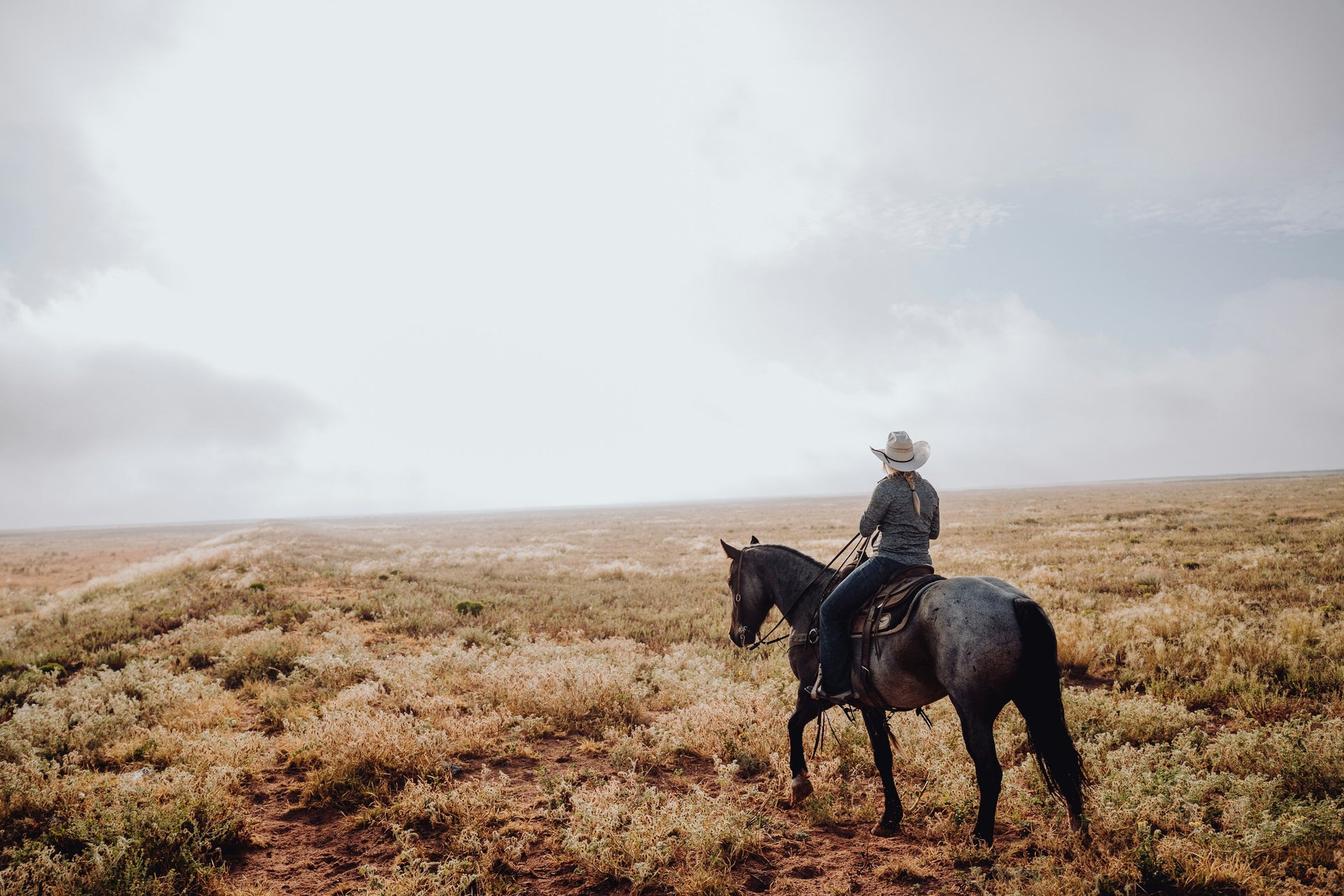The cowgirl is an iconic part of the American West. The word “cowboy” refers to someone who cares for cattle on ranches, often horseback. Cowboy methods descend from vaquero traditions brought Mexico from Spain, and were then adapted by indigenous Americans.
Before the term “cowgirl” was ever coined, women played an integral part of migration toward Western territories and settling those lands, and ultimately doing the same work that cowboys did. In celebration of Women’s History Month, we’re taking a quick look at how cowgirls have shaped the frontier.
The Creation of Cowgirls
In the 1840s, covered wagons began transporting mostly men, and also women and children from eastern United States cities toward Western regions including Kansas, Nebraska, Colorado, Wyoming, Montana, New Mexico, Arizona and Utah. As the westward push continued, these pioneers reached Idaho and the West Coast’s California, Oregon and Washington.
From the 1840s to the 1860s, particularly after the Civil War, nearly 400,000 people moved out west. The Homestead Act of 1860 allowed men—and women, if they were at least 21 and unmarried—to claim 160 acres in Western regions.
By 1870, over 172,000 women over the age of 20 lived out west, in comparison to 385,000 men. These women of the west possessed pioneering spirits and wills of iron to survive the challenging environments. Women homesteaders took on chores previously done only by men to farm and ranch on the land. Women rode horses, roped cattle and even shot guns when they needed to. And they rode astride, in attire once reserved for men, like split skirts, cowboy hats, and shoes.
While not quite so highlighted in history books, women held important roles in ranching, as the operations were family affairs. Spanish Maria Bentacour is considered the founder of modern San Antonio, and she held large amounts of land and cattle in the 1700s. It was not uncommon for a woman to continue running a ranch after her husband passed away, or even start a ranch on her own.
Women not only ran the ranch at home, they also drove cattle up the trail. Mary Bunton was one such cowgirl, and she wrote about driving up the Western Train in 1886 with her husband. Lizzie Williams and Margaret Borland each drove their cattle up the Chisholm Trail.
Who was the First Cowgirl in American History?
Sally Skull was one of the first women in Texas to own her own ranch. In the 1840s, divorced, she ran a cattle operation on her own land, later becoming a horse trader and freighter by the 1850s. During the Civil War, she hauled goods in wagons from Texas to Mexico. She was a force of nature, was married five times and had many legal scuffles with the government.
It was challenging to be a woman in the early days of the West, and some chose to masquerade as men to do the job. Josephine Monaghan of Buffalo, New York, dressed as a man to travel west more safely in 1867. Once she reached Idaho gold country, she continued passing as a man so she could stake a mining claim, vote before it was legal for women, and build a ranch. It was only after she died in 1904 that her true identity was discovered.
Teddy Roosevelt dubbed Lucille Mulhall as America’s first cowgirl, after he watched her ride at the Mullhall Ranch in Oklahoma. Born in 1885, in St. Louis, Missouri, Mulhall was a champion steer roper, starred in several Wild West shows, and produced her own rodeo. She was married at one time to Tom Burnett, the son of Burk Burnett, who founded the Four Sixes Ranch. She passed away in 1940. Mulhall was inducted into the Rodeo Hall of Fame in 1975, and the National Cowgirl Hall of Fame in 1977.
Native American Cowgirls
Native American women have always held key roles in agricultural work, which surprised European settlers. Women oversaw tribe agricultural systems, as well as planting, cultivating and harvesting vegetables and other crops. Native American women innovated and experimented with agricultural practices to feed their communities, while Native American men were responsible for fishing and hunting.
Indigenous tribes in the Plains regions were hunters and gatherers, following herds of buffalo. In these communities, women gathered supplementary berries and other plants, as well as ran their homes. Native American men harvested buffalo and wild game, and women skinned and processed the meat and hide.
After the Civil War, cattle ranching became an important industry in the Plains regions, and indigenous tribes lost much of their land in the process. Some Native Americans turned to cattle ranching for themselves as an alternative to farming, and some cowboyed for other ranches.
African American Cowgirls
It’s been estimated that one in four working cowboys of the West were African American. After the Civil War, Black cowboys found work on cattle ranches in a variety of roles, from trail cooks, to wranglers, ropers and drovers.
Black women were also instrumental in pioneering the West. Mary Fields, nicknamed “Stagecoach Mary” held many jobs over her life from 1832-1914. She was born enslaved in Tennessee and was emancipated at the end of the Civil War. She took a job at a convent in Toledo, Kansas, and became close with one of the nuns named Sister Amadeus. That nun moved to a Jesuit mission in Montana. When she became sick with pneumonia, Fields quickly traveled to Montana to care for her, but she stayed for 10 years working at the mission. Eventually Fields became the mission forewoman. After a conflict with another worker, she was forced to leave the mission.
Fields became the second female mail carrier in the country when she took the job in 1895. Already in her 60s, Field earned her Stagecoach Mary nickname for bravely and dependably fulfilling her duties during a time when the job was extremely dangerous. After retiring, Field lived in Cascade, Montana, as the city’s first Black resident.
How Did Cowgirls Shape American History?
The real question is how did they not shape American history? Women were essential to building ranches and communities in the West. They were—and are—the glue to many families operating cattle operations.
The mystique of a cowgirl is backed by hard-working women who overcame their fears and doubts to take on difficult tasks every day.
Read More:
How Mexican Vaqueros Inspired the American Cowboy
The Lesser Known History of African American Cowboys
African American Women of the Wild West
Photo by Bailey Alexander on Unsplash


